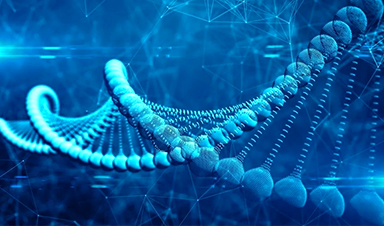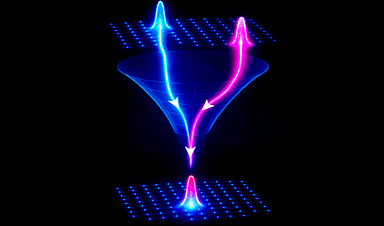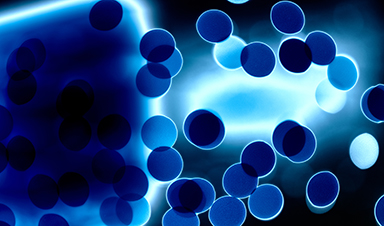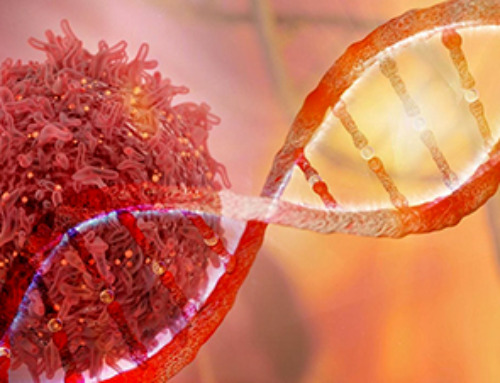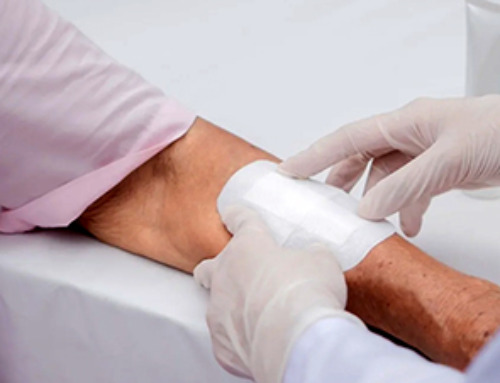Innovative research into DNA nanotechnology has been submitted to the journal, Nanomedicine: Nanotechnology, Biology and Medicine, comprising intelligent aptamer-incorporated DNA nanonetwork (Apt-Nnes). This novel technology can be used for imaging cancers as well as for increased drug delivery of chemotherapeutics.
The Need for DNA Nanotechnology
Nanoscale materials, which include materials that are within the nanoscale of 1 and 100 nm in size, have gained traction with the integration of nanotechnology into biomedical research.
Nanomaterials such as nanoparticles and nanocarriers have proven to have great potential when delivering drugs to target sites as they allow increased precision of drug release with a high concentration in the target areas. This also reduces systemic effects including toxicity, which is a major concern for chemotherapy drugs used for cancer therapeutics. The biodistribution of these drugs is non-specific and can cause secondary medical issues such as the elimination of healthy cells and tissue, and even affect organ functioning.
While there have been nanomaterials developed for this application such as liposomes and nanoparticles, these can also be associated with obstacles and limitations including the requirement of extensive surface functionalization to aid targetability as well compatibility with the immune system.
These drawbacks have increased research into DNA nanotechnology. This sector has illustrated benefits such as higher suitability for use in vivo as well as a high level of programmability. These advantages have made DNA nanotechnologies like aptamers potentially more suitable for use in cancer diagnostics and therapeutics such as bioimaging, biosensors and drug carriers.
Aptamers
Aptamers can be described as being short single-stranded oligonucleotides, which are usually 20-60 nucleotides long, with the ability to bind to target molecules with a high level of specificity and affinity.
These DNA molecules can bind a wide range of targets such as simple inorganic molecules, large proteins, and cells, as well as being cheaper nucleotide analogues of antibodies. This can enable aptamers to be used as a more cost-effective alternative, with the added benefit of being easily produced and non-toxic.
Applications of aptamer within DNA nanotechnology have led to innovative research into its suitability for cancer research and therapy.
Innovative Research
The pre-print article submitted to the journal Nanomedicine: Nanotechnology, Biology and Medicine has undertaken research to develop a simplistic approach for constructing a versatile aptamer-incorporated DNA nanonetwork (Apt-Nnes) for carrying and delivering drugs with increased targetability.
This research has been developed for the application of carrying chemotherapy drugs such as doxorubicin (Dox), which can be loaded onto the Apt-Nnes carrier. This drug delivery carrier has a high cargo loading capacity as well as being suitable for biological systems without causing immunity issues or resulting in toxicity.
Additionally, the targetability of this DNA technology was tested for its potential use in cancer therapeutics by evaluating its specificity for the protein tyrosine kinase 7, which is overexpressed in T-cell acute lymphoblastic leukemia. The results of this research consisted of finding the binding affinity of this drug delivery carrier was heavily enhanced through the use of multivalent aptamers. Additionally, the structure itself was suitable for its purpose as its structural integrity was maintained in fetal bovine serum for eight hours.
The small size of this drug delivery carrier enables natural interaction with cancer cells, and this can allow its cancer-specific receptors to detect and enter cancer cells before releasing the chemotherapy drug with a high concentration within a localized area. Cytotoxicity within a localized tumor site using this DNA nanotechnology allow the preservation of heathy cells and tissue within the patient and this lack of systemic toxicity can allow patients to experience fewer adverse effects.
Future Outlook
Utilizing aptamers, this nano-based method can also enable a more patient-centered treatment approach, which can include potentially fewer chemotherapy treatment sessions, especially if sustained drug release can be enabled. The use of smaller doses of the chemotherapy drug is also a possibility with the drug being released in the target area, a larger dose is no longer required to ensure the site is reached. This can be beneficial for health care systems as the requirement of the overall drug treatment dose per patient is reduced and there this can be cheaper for the hospital, allowing the treatment of a larger number of patients.
The quality of life of these patients that are able to experience reduced toxicity is also a benefit of this novel approach and with further research, this research, while in its infancy, may be able to enter clinical practice and increase patient care.
News
New nanomedicine wipes out leukemia in animal study
In a promising advance for cancer treatment, Northwestern University scientists have re-engineered the molecular structure of a common chemotherapy drug, making it dramatically more soluble and effective and less toxic. In the new study, [...]
Mystery Solved: Scientists Find Cause for Unexplained, Deadly Diseases
A study reveals that a protein called RPA is essential for maintaining chromosome stability by stimulating telomerase. New findings from the University of Wisconsin-Madison suggest that problems with a key protein that helps preserve chromosome stability [...]
Nanotech Blocks Infection and Speed Up Chronic Wound Recovery
A new nanotech-based formulation using quercetin and omega-3 fatty acids shows promise in halting bacterial biofilms and boosting skin cell repair. Scientists have developed a nanotechnology-based treatment to fight bacterial biofilms in wound infections. The [...]
Researchers propose five key questions for effective adoption of AI in clinical practice
While Artificial Intelligence (AI) can be a powerful tool that physicians can use to help diagnose their patients and has great potential to improve accuracy, efficiency and patient safety, it has its drawbacks. It [...]
Advancements and clinical translation of intelligent nanodrugs for breast cancer treatment
A comprehensive review in "Biofunct. Mater." meticulously details the most recent advancements and clinical translation of intelligent nanodrugs for breast cancer treatment. This paper presents an exhaustive overview of subtype-specific nanostrategies, the clinical benefits [...]
It’s Not “All in Your Head”: Scientists Develop Revolutionary Blood Test for Chronic Fatigue Syndrome
A 96% accurate blood test for ME/CFS could transform diagnosis and pave the way for future long COVID detection. Researchers from the University of East Anglia and Oxford Biodynamics have created a highly accurate [...]
How Far Can the Body Go? Scientists Find the Ultimate Limit of Human Endurance
Even the most elite endurance athletes can’t outrun biology. A new study finds that humans hit a metabolic ceiling at about 2.5 times their resting energy burn. When ultra-runners take on races that last [...]
World’s Rivers “Overdosing” on Human Antibiotics, Study Finds
Researchers estimate that approximately 8,500 tons of antibiotics enter river systems each year after passing through the human body and wastewater treatment processes. Rivers spanning millions of kilometers across the globe are contaminated with [...]
Yale Scientists Solve a Century-Old Brain Wave Mystery
Yale scientists traced gamma brain waves to thalamus-cortex interactions. The discovery could reveal how brain rhythms shape perception and disease. For more than a century, scientists have observed rhythmic waves of synchronized neuronal activity [...]
Can introducing peanuts early prevent allergies? Real-world data confirms it helps
New evidence from a large U.S. primary care network shows that early peanut introduction, endorsed in 2015 and 2017 guidelines, was followed by a marked decline in clinician-diagnosed peanut and overall food allergies among [...]
Nanoparticle blueprints reveal path to smarter medicines
Lipid nanoparticles (LNPs) are the delivery vehicles of modern medicine, carrying cancer drugs, gene therapies and vaccines into cells. Until recently, many scientists assumed that all LNPs followed more or less the same blueprint, [...]
How nanomedicine and AI are teaming up to tackle neurodegenerative diseases
When I first realized the scale of the challenge posed by neurodegenerative diseases, such as Alzheimer's, Parkinson's disease and amyotrophic lateral sclerosis (ALS), I felt simultaneously humbled and motivated. These disorders are not caused [...]
Self-Organizing Light Could Transform Computing and Communications
USC engineers have demonstrated a new kind of optical device that lets light organize its own route using the principles of thermodynamics. Instead of relying on switches or digital control, the light finds its own [...]
Groundbreaking New Way of Measuring Blood Pressure Could Save Thousands of Lives
A new method that improves the accuracy of interpreting blood pressure measurements taken at the ankle could be vital for individuals who are unable to have their blood pressure measured on the arm. A newly developed [...]
Scientist tackles key roadblock for AI in drug discovery
The drug development pipeline is a costly and lengthy process. Identifying high-quality "hit" compounds—those with high potency, selectivity, and favorable metabolic properties—at the earliest stages is important for reducing cost and accelerating the path [...]
Nanoplastics with environmental coatings can sneak past the skin’s defenses
Plastic is ubiquitous in the modern world, and it's notorious for taking a long time to completely break down in the environment - if it ever does. But even without breaking down completely, plastic [...]
